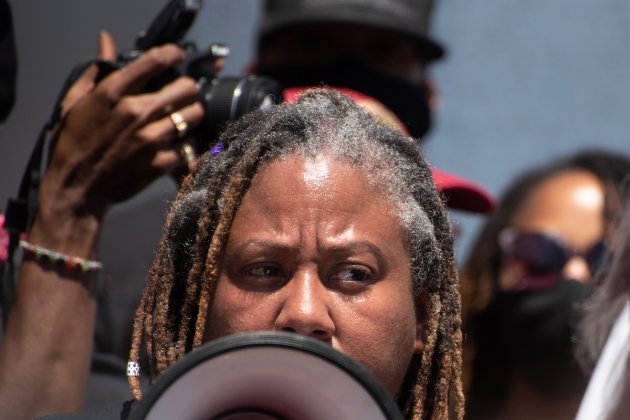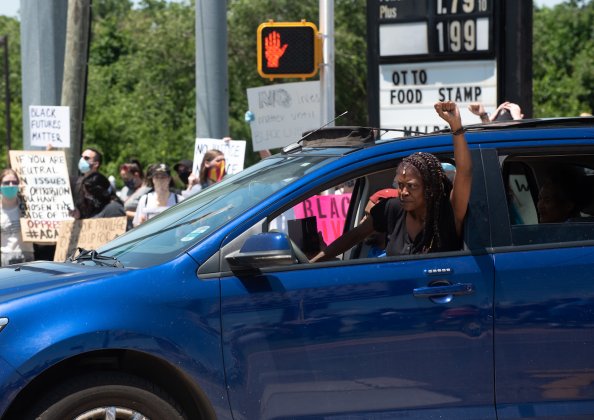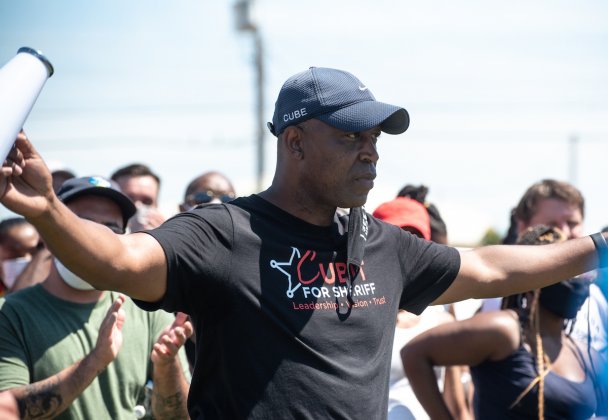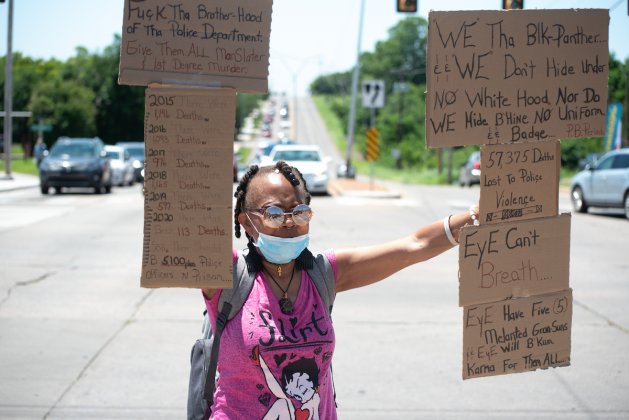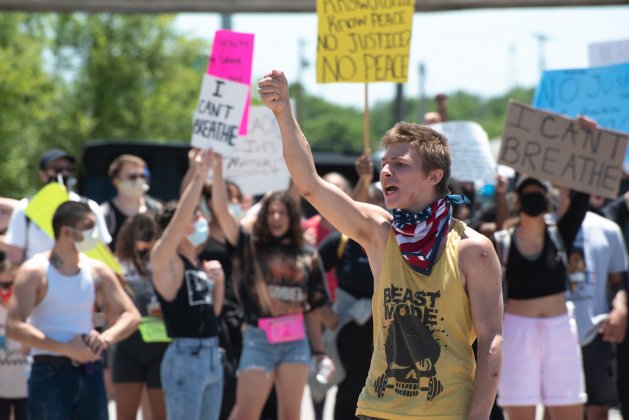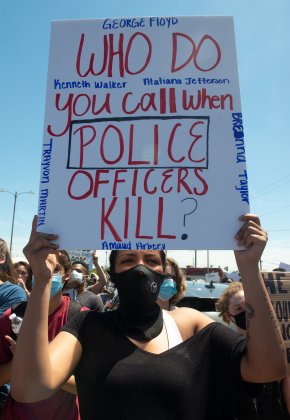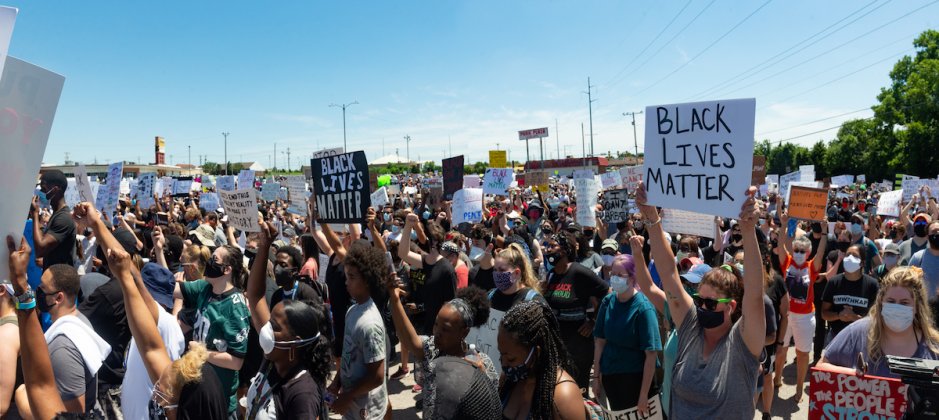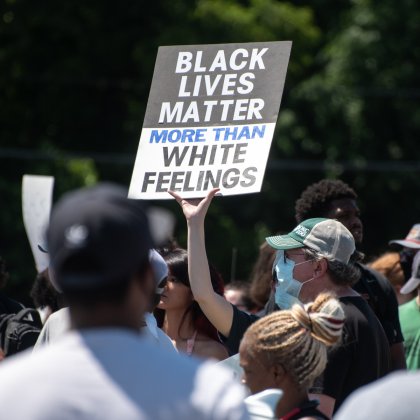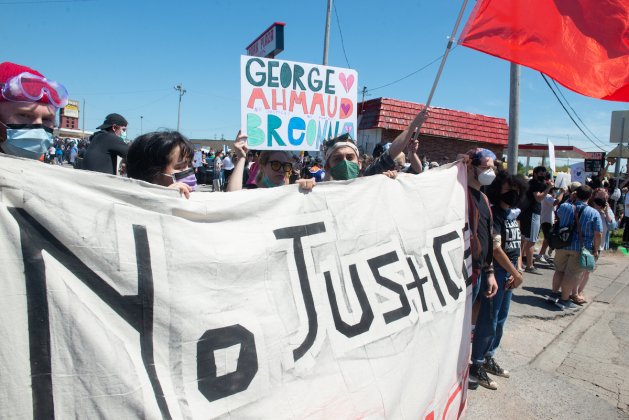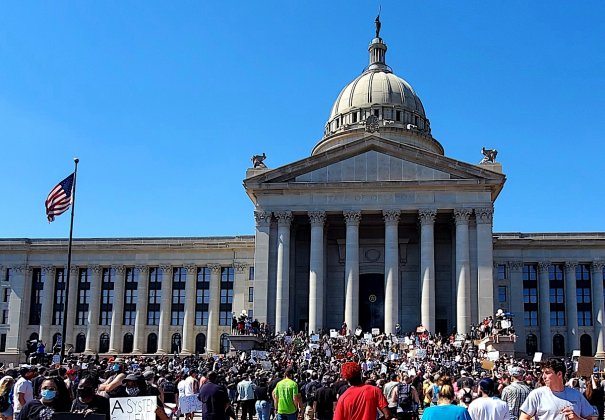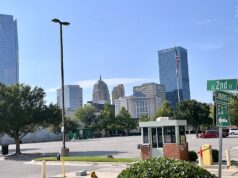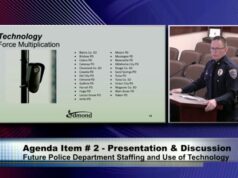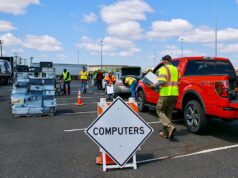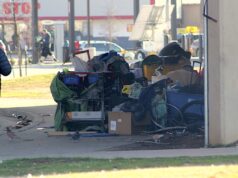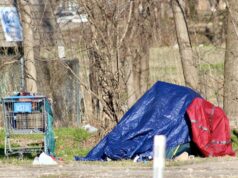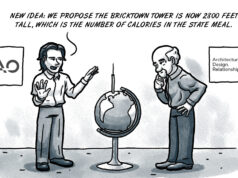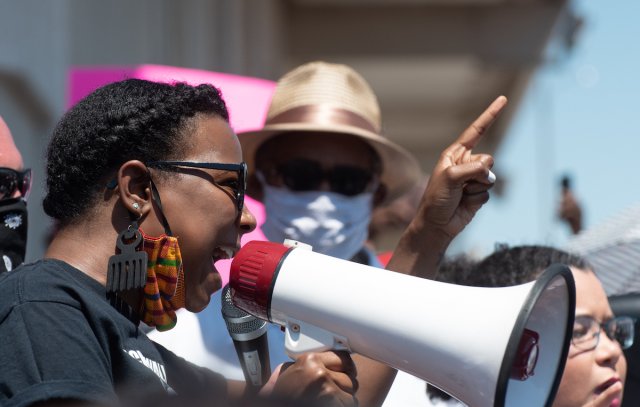

As hundreds of protesters stood listening to a series of speakers at a Black Lives Matter rally on Oklahoma City’s northeast side Sunday afternoon, an explosion pierced the air. Shrieks and nervous muttering followed before smoke trails overhead indicated it had only been a firework.
Organizers on stage shouted for people to “keep focused.” The speaker at the time, Vicky Scott, shook her head and continued.
“I’ve [been] through too much to flinch,” Scott said.
But the 3,000-person crowd was understandably antsy. The nation has been rocked by protests of police brutality following killing of George Floyd, a black man in Minneapolis who died after a police officer restrained him by kneeling on his neck. Several protests nationwide have escalated to include elements of violence, including Saturday’s less formal gathering in northwest Oklahoma City where nearly two dozen people were arrested, buildings were vandalized and law enforcement fired tear gas into agitated crowds that had walked two miles to the police station.
On Sunday, despite sweltering heat and an ongoing pandemic, a larger crowd gathered at 2:30 p.m. in front of Nappy Roots Books to hear a series of speakers at a rally organized by the OKC chapters of Black Lives Matter and the NAACP.
Though the weekend’s protests were sparked by Floyd’s death, Oklahoma has its own fraught history of racial violence and police brutality. Sunday’s demonstration took place on the 99th anniversary of the Tulsa Race Massacre. And cases of black Oklahomans who have died at the hands of police in recent years — including Terence Crutcher, Joshua Barre and Isaiah Lewis — are still on many people’s minds.
While BLM OKC organizers and speakers repeatedly called for peace Sunday afternoon, the firework disturbance ultimately served as a grim prelude to a second straight night of arrests, vandalism and clashes with police downtown hours after the organization’s official role in the rally had concluded.
‘We have to seek justice the right way’
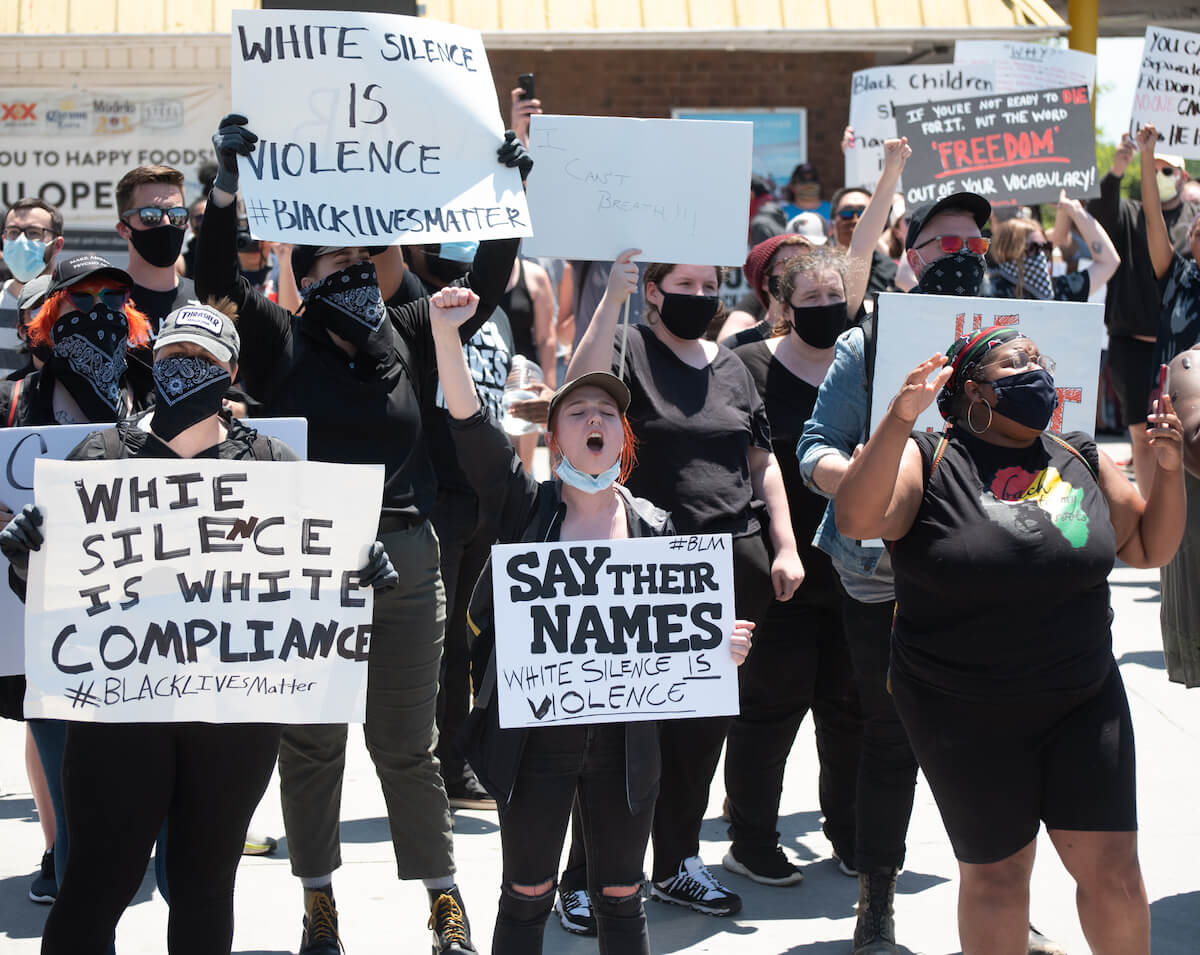
Scott spoke about her first-hand experience dealing with the criminal-justice system as a black Oklahoman. Her son, Derrick Ollie, died in jail in 2019. Scott and the rest of Ollie’s family were not informed for several days, she said, and she wasn’t given the opportunity to identify his body.
“They would not tell me anything. They have not until today allowed me to talk to police officials about what happened to my son,” Scott said on the one-year anniversary of her son’s funeral. “He was dead for four days before I even found out, and his son found out on the internet. (…) Then I had to wait another four days until I could see my son’s body.”
Despite her harrowing experience, Scott — like many of the rally’s leaders — did not advocate for retribution but called for accountability.
“I don’t hate the police department, but they’ve got to do the right thing,” Scott said. “I have begged, I have pleaded. What else can I do?”
Following numerous arrests, tear gas deployments and broken windows in the wake of Saturday night’s protest, community leaders emphasized repeatedly that Sunday’s demonstration was not intended to incite violence. Most of the protesters appeared to be on the same page.
When the firework went off shortly before 3:30 p.m., several people in the area quickly identified a young man they said had set it off. Many shouted at him to leave, and he quickly walked away from the scene.
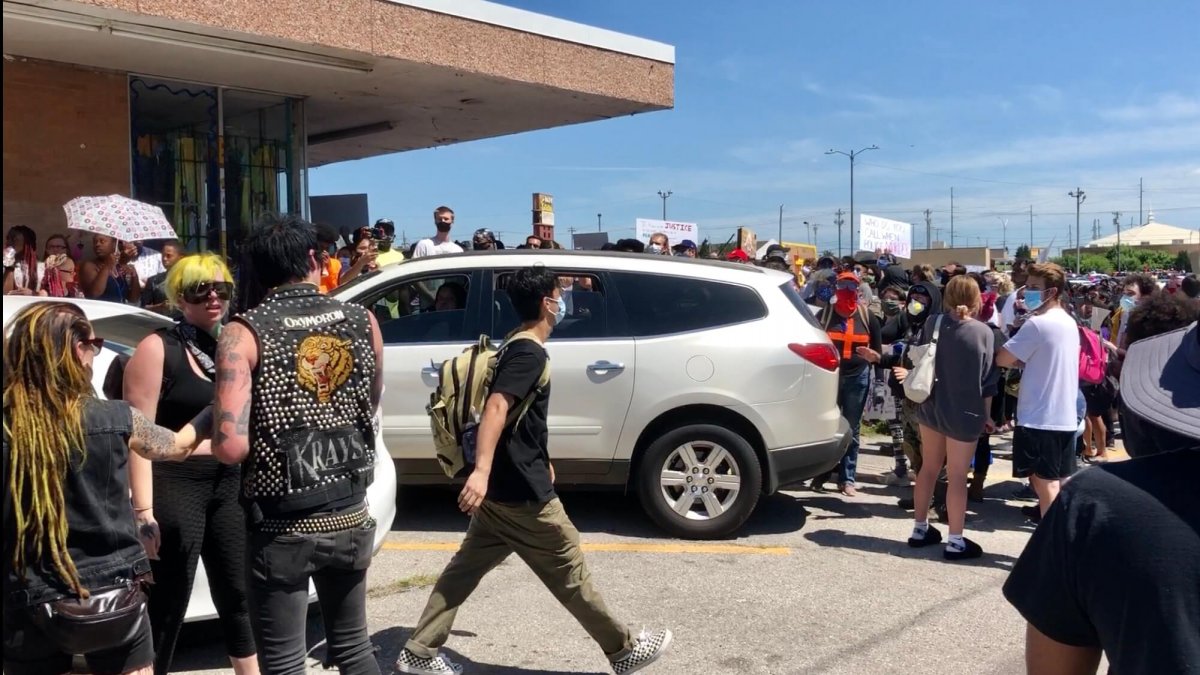
“I was pissed because he blew it up right next to us knowing that we were just sitting there and if it fell it could harm us,” said Cate Jones. “Clearly he was just trying to incite violence or start a riot. Everything is going good so far, and we don’t need some asshole trying to start stuff for whatever reason because he’s just a kid.”
About 100 feet away on the crowded stage, many of the messages discouraged violence and emphasized a need for wide systemic change.
“Hell yeah I’m angry at what’s happening in our community, to our black men and women, about the oppression that’s been against us for 400 years,” said Oklahoma City Ward 7 Councilwoman Nikki Nice. “But we have to seek justice the right way. Make sure you know who represents you at the local level. Make sure you are registered to vote.”
Nice said protesters should know that the Black Lives Matter movement not only seeks justice for those slain by police but aims to address the everyday economic hardships black communities face.
“We are seeking justice and must also understand how oppressed we are. We say stop killing us, and stop killing our communities,” Nice said. “When you drive around this community (…) I want you to understand what has been taking place, why we have to have a conversation 30 years in the making just to get a new grocery store built.”
Travis Miller, a black delivery driver who was recently harassed and blocked into a neighborhood for half an hour, spoke about the dangers that African-Americans often face in daily life. To him, staying calm and avoiding violence is about survival.
“If I didn’t maintain my composure, I would have become that next hashtag,” Miller said. “Sometimes, swallowing your pride is the hardest thing you have to do. But your children need you.”
‘This is a phenomenon’

Though Sunday’s afternoon rally was spearheaded by the city’s black community, it drew a wide spectrum of Oklahomans. Muslim headscarves dotted the crowd. In a gas station parking lot, a group of Mennonites sang hymns.
Among the protesters was Jimmy Lawson, who has long fought to clear the name of his friend Julius Jones, a black man who has spent more than 20 years on death row in Oklahoma for a murder he maintains he didn’t commit.
Lawson said this wave of protests felt different from any he has seen.
“I’m in my 40’s — this is not my first rodeo. It does feel different. In my lifetime, I’ve never seen more than 10 cities on the same accord, fighting for the same inequalities. So that’s huge,” Lawson said. “Look at Salt Lake City, which is — I hate to say it — but almost zero percent African-American. How special is that to have a city full of whites and other non-blacks fighting for the same thing? How powerful is that?”
Another attendee, Elizabeth Ivy, agreed that protests in the wake of George Floyd’s murder have the chance to become a larger movement than she has ever seen. Ivy emphasized that now she is protesting to defend all who come into contact with the police.
“It’s very important it is done nonviolently, because we’re not violent people. We just want justice. We’re just tired of our people getting killed for no reason,” Ivy said. “Not only black race, white race, Mexicans, Indians. There’s no telling how many people have been in the county jail and been killed, and we don’t even hear about them. I’m their voice, that’s why I’m out here.”
‘We are asking for a ceasefire’
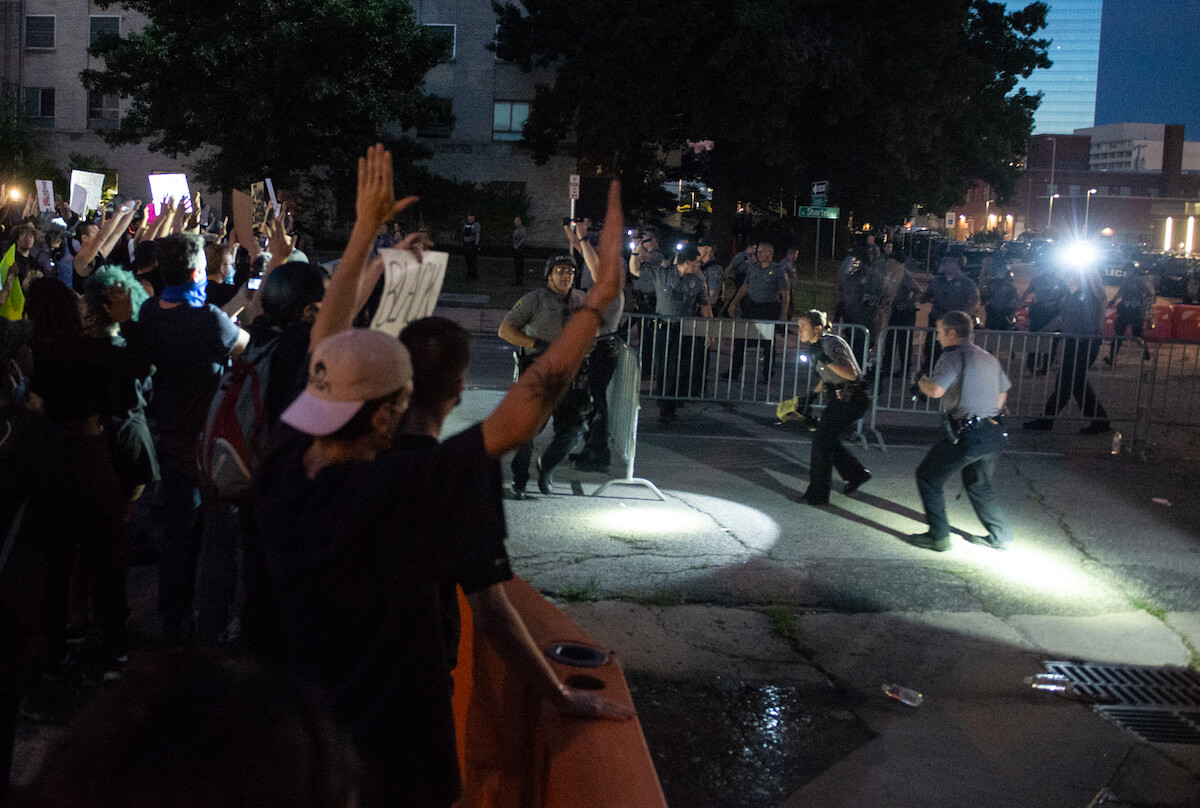
When formal remarks ended in front of Nappy Roots Books, many of those present joined a march to the Oklahoma State Capitol. At least one protestor spray-painted columns and doors on the front of the building, but others in the crowd rushed to try and clean up the vandalism.
From there, the crowd marched downtown and stood along barriers erected outside the Oklahoma County Jail and the Oklahoma City Police Department. Protesters and police had conversations along the barricade line. At one point, sheriff deputies joined protestors in taking a knee to symbolize solidarity with their fight.
But tensions began to rise ahead of sunset around 8:30 p.m. with the arrival of additional protesters who screamed obscenities, threw water bottles and changed the tone of the evening. Officers responded with tear gas and riot gear. Eventually, the scene began to mirror Saturday night’s encounter, but this time Mayor David Holt signed a 10 p.m. curfew for an area of downtown, with police officers moving to push the remaining protesters out of the area.
On Twitter, Nice was among those who called for people to return home.
Just seeing that someone tried to set fire to the Happy Foods on NE 36th and Kelley. C’mon y’all. Go Home.
— Nikki Nice (@NikkiNiceOKC) June 1, 2020
The curfew brought with it further mayhem. A pickup truck was filmed speeding through the crowd shortly after 9:30 p.m., and gunshots were reportedly fired from another.
People started throwing things at police, a firework went off, fireworks going off thrown by people in the crowd. pic.twitter.com/Z5Xuz0qCUE
— Dillon Richards (@KOCODillon) June 1, 2020
Despite the escalation that followed sunset, OKC’s Black Lives Matter chapter continued to decry violent tactics.
“We are asking for a ceasefire. We are asking for everyone to disperse,” head of local BLM T. Sheri Dickerson says
— Dillon Richards (@KOCODillon) June 1, 2020
The chapter’s director, T. Sheri Dickerson, called for the protests continuing after curfew to ask people to go home. Monday morning, she helped organize an effort to clean up what damage was left behind in the community.
Photos from the May 31 Black Lives Matter rally
(Editor’s note: Michael Duncan and Tres Savage contributed to this story.)









